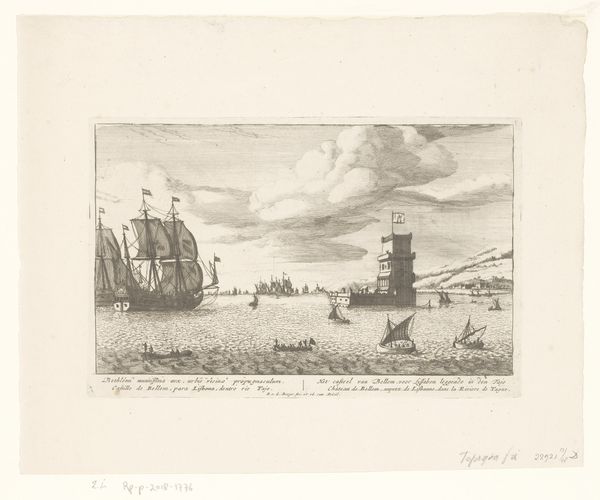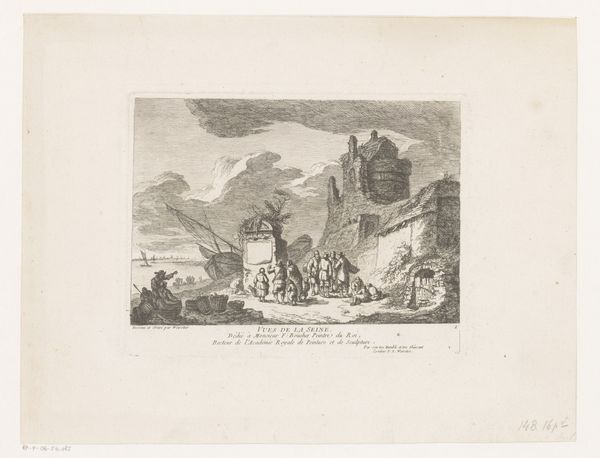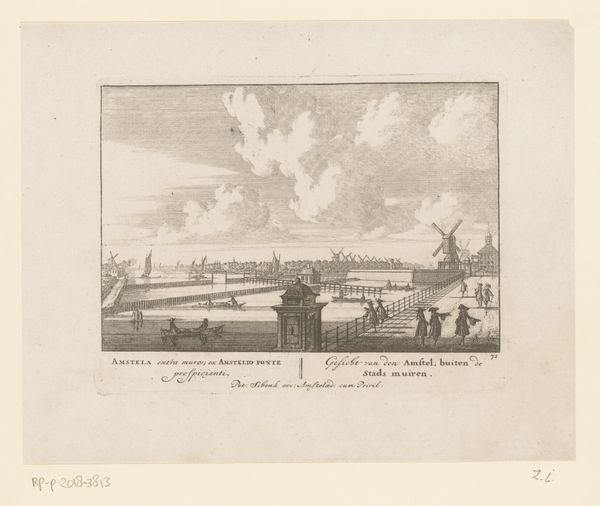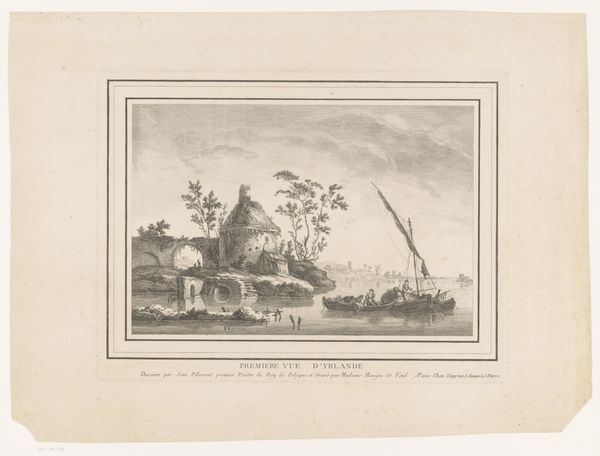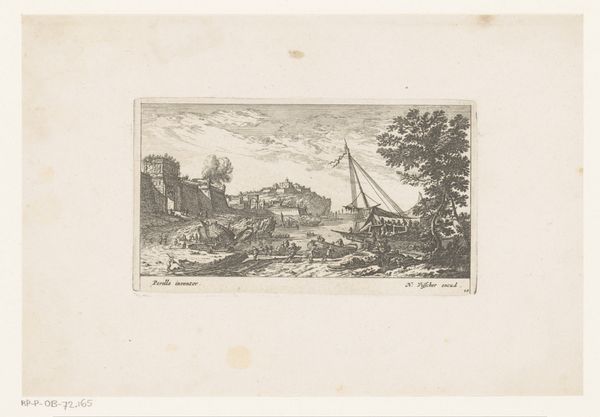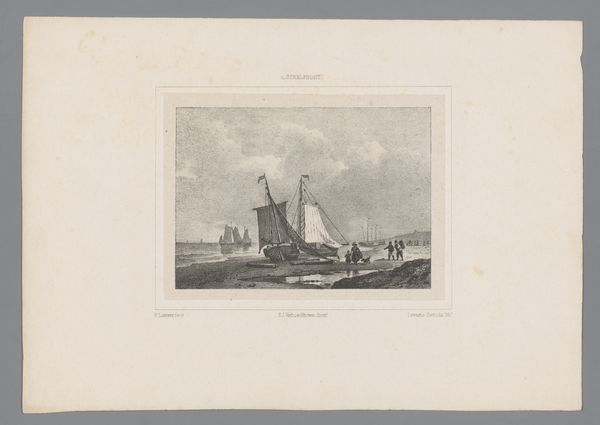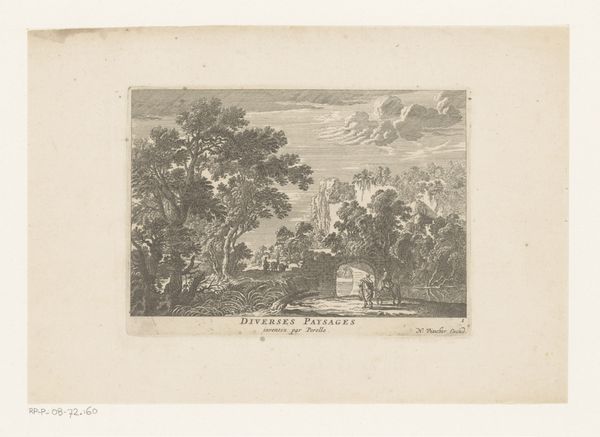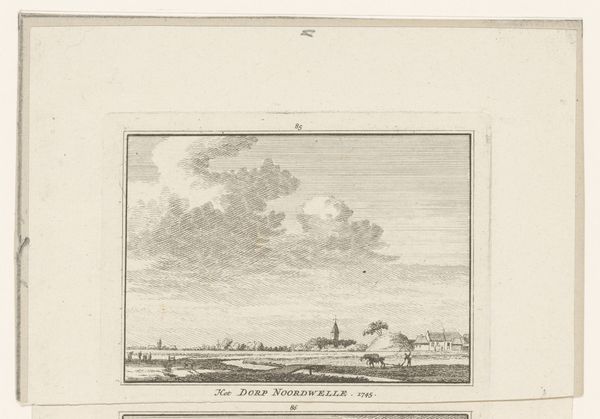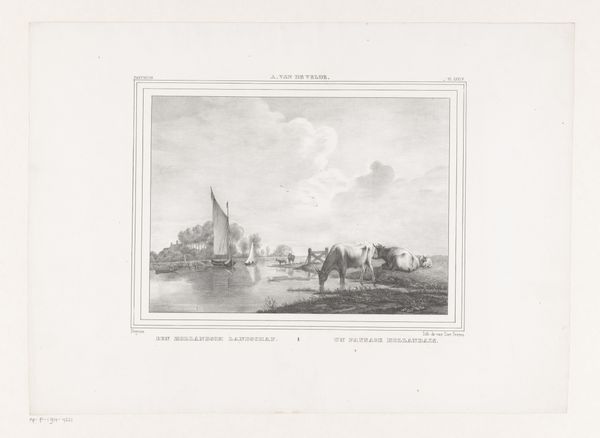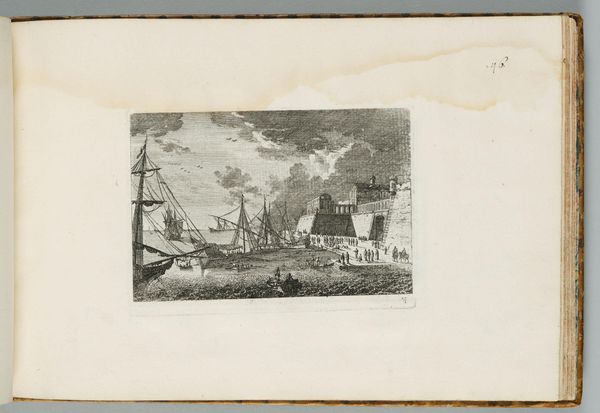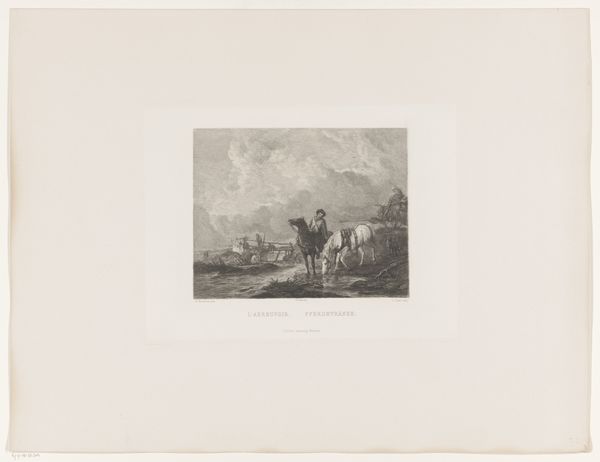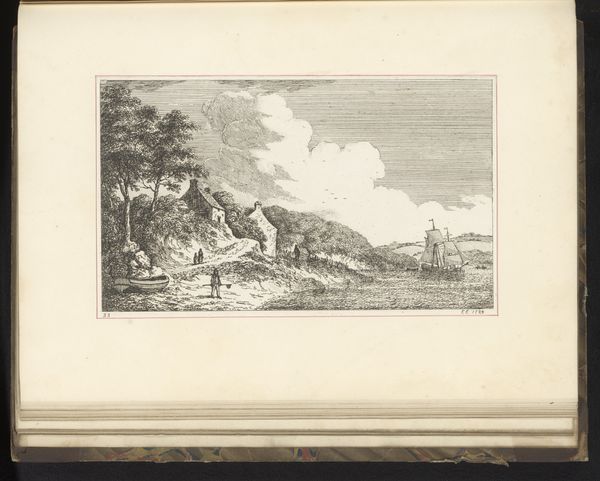
print, etching
#
dutch-golden-age
# print
#
etching
#
landscape
#
cityscape
Dimensions: height 102 mm, width 136 mm
Copyright: Rijks Museum: Open Domain
Curator: Hendrik Spilman’s “Gezicht op Schellingkhout, 1726,” created sometime between 1745 and 1774, is a captivating cityscape rendered as an etching. It's currently held here at the Rijksmuseum. What are your first thoughts? Editor: It feels quite stark, doesn't it? The lines are so precise, almost mechanical, and yet there's a softness to the sky—like it might rain on all that careful craftsmanship. Curator: I’m fascinated by the technical aspect of the print itself. Etching involves coating a metal plate, scratching an image into it, and then using acid to bite the lines. Imagine the artist repeatedly dipping the plate. Editor: Absolutely! Thinking about labor, the print as medium would have created greater accessibility to this kind of scene beyond the elite who would’ve commissioned painted cityscapes. Curator: Precisely. Prints democratized images in a way we take for granted now. Editor: It also challenges ideas of what art really *is*. We tend to elevate painting above the graphic arts, yet so much ingenuity and labor is invested into techniques of reproduction. Curator: You know, it strikes me that even though it depicts a specific place, the scene possesses a dreamlike quality. Editor: The clouds perhaps. Are they shrouding or enlightening the landscape? Curator: Perhaps a bit of both. And the townspeople; they’re mere silhouettes, ghosts inhabiting a meticulously rendered reality. Spilman captured not just the buildings, but also an atmosphere—a mood that transcends pure documentation. It offers an imagined Schellinkhout, which is both there and not there. Editor: Looking again at how these textures are generated from lines—each one physically carved by the artist to generate value. Incredible to consider the artist's engagement. It prompts me to rethink the very notion of art. Curator: Yes. Art is process and the material, labor and craft, thought and vision. Editor: The layering reveals complexities in production beyond just artistic creation. Curator: In this image, maybe we glimpse the many unseen layers shaping even the smallest village.
Comments
No comments
Be the first to comment and join the conversation on the ultimate creative platform.
